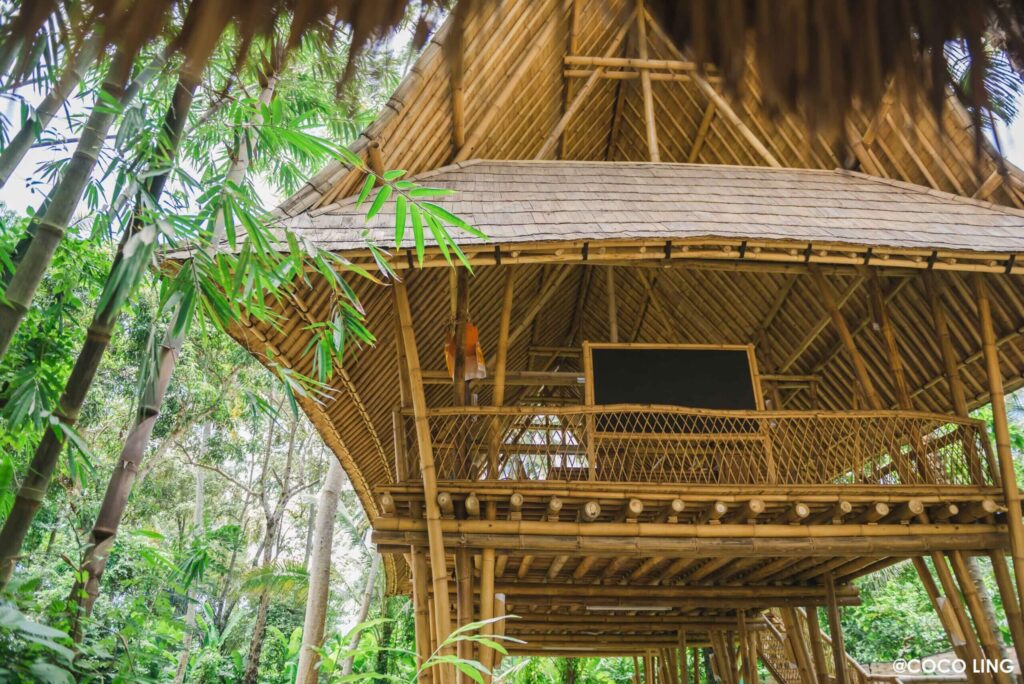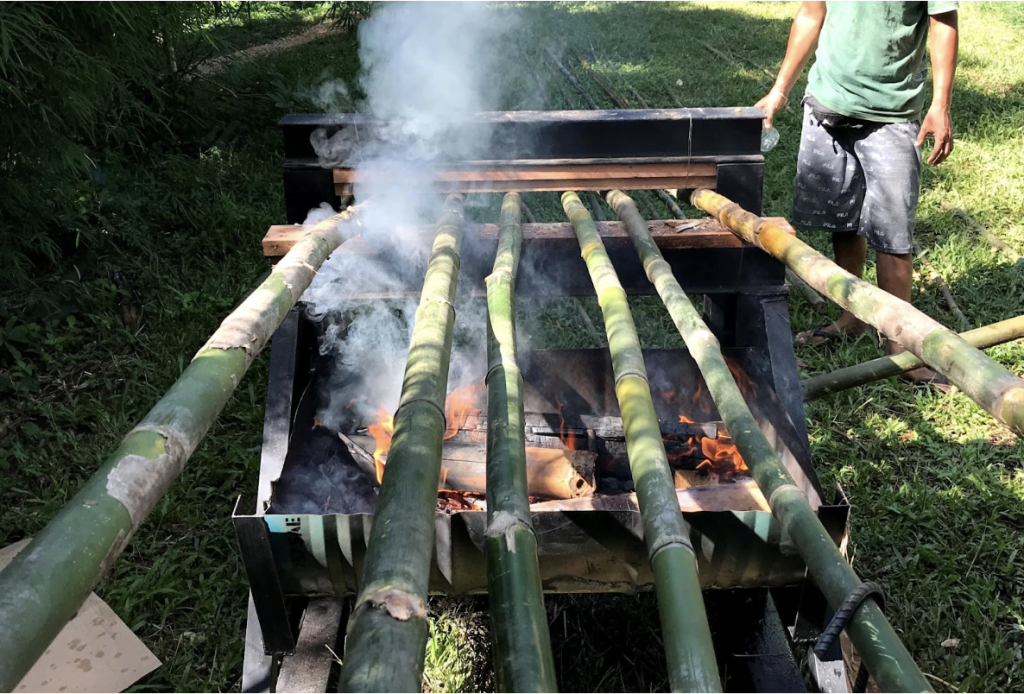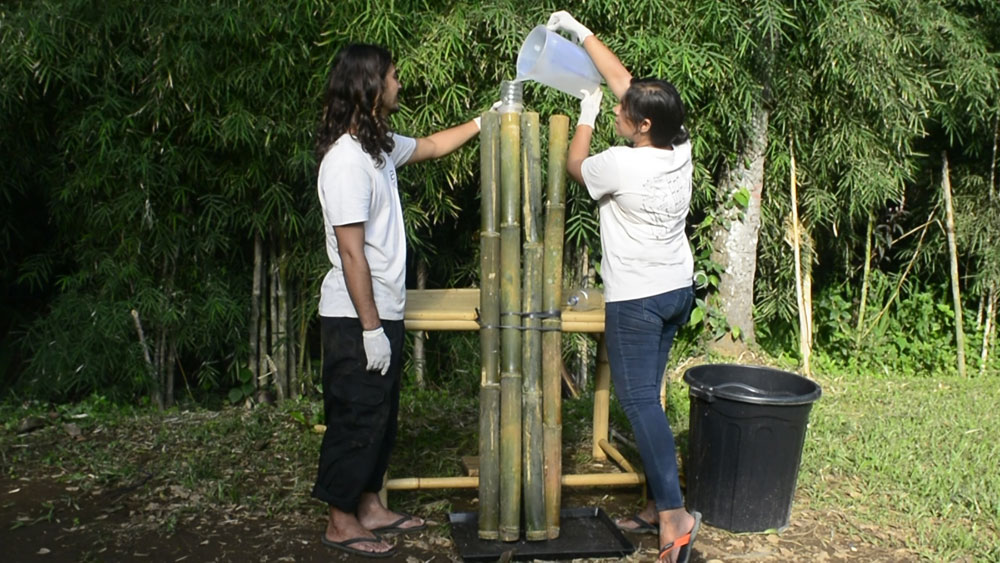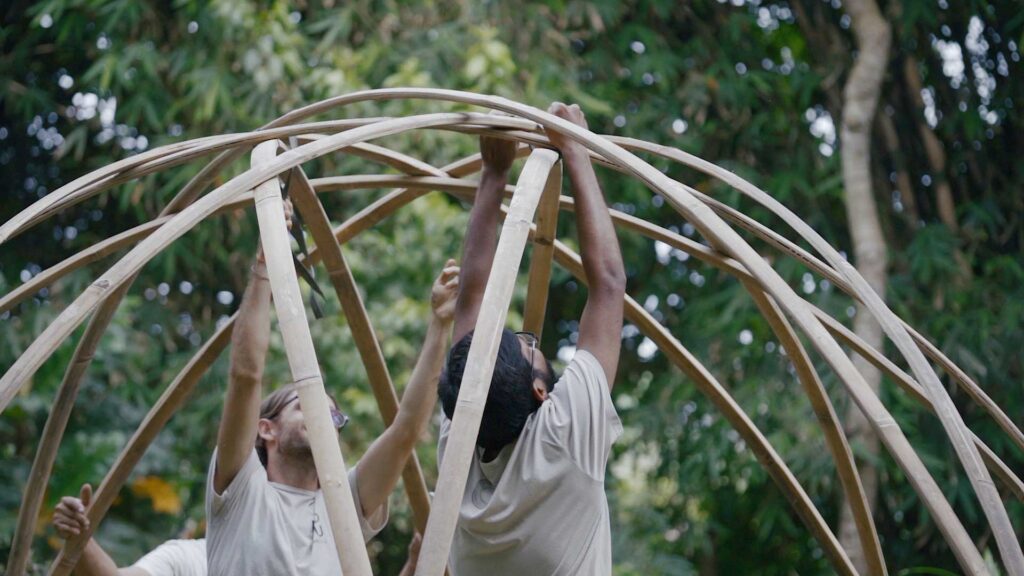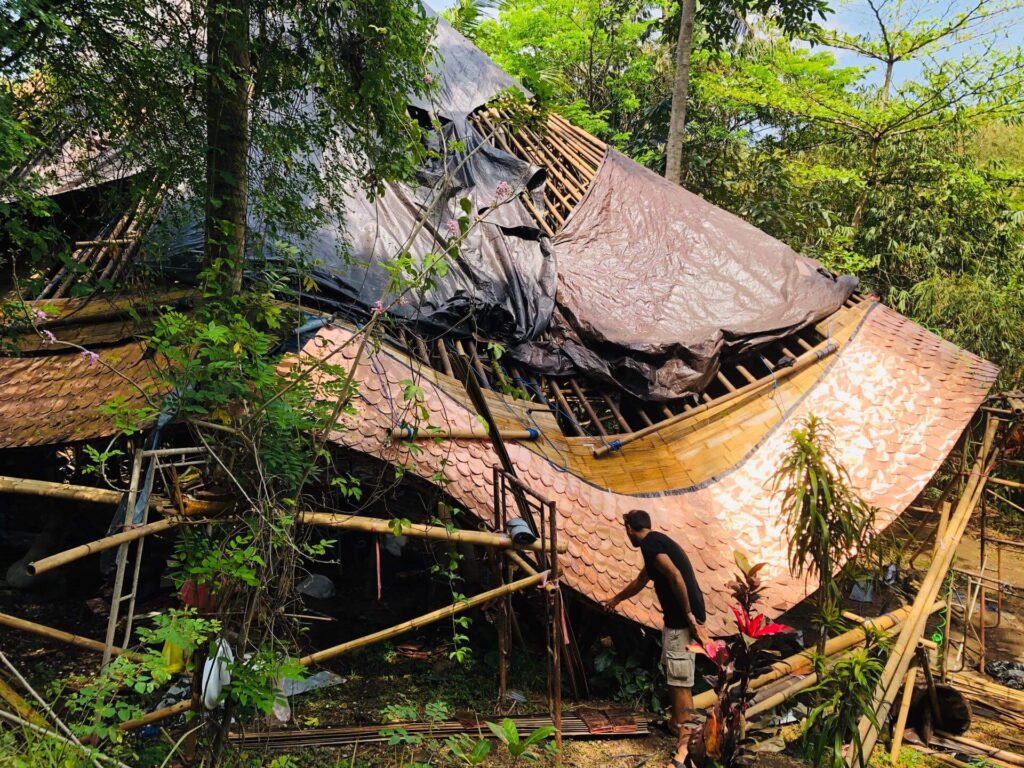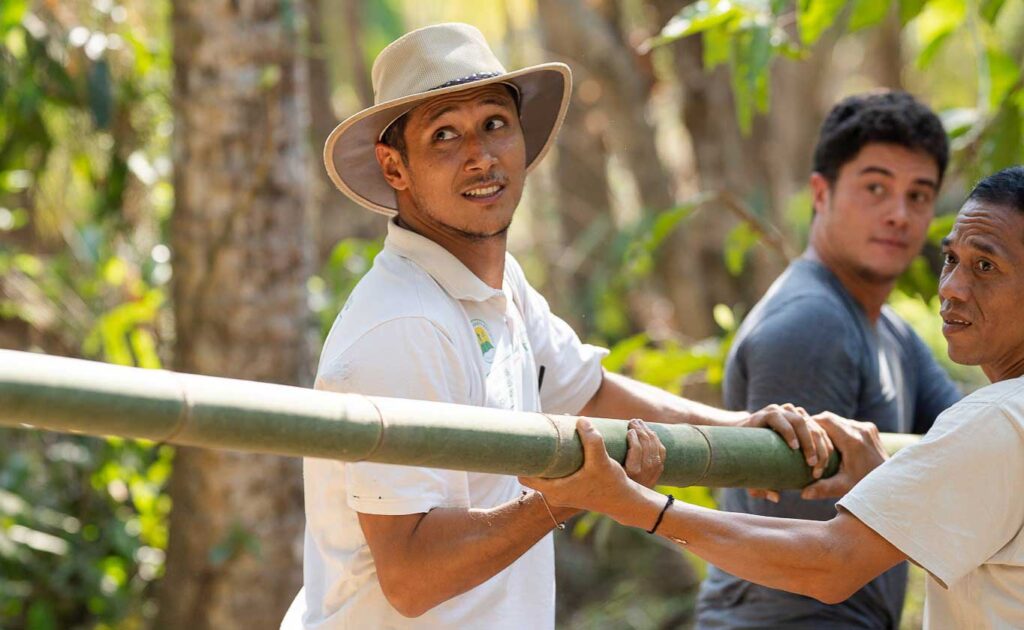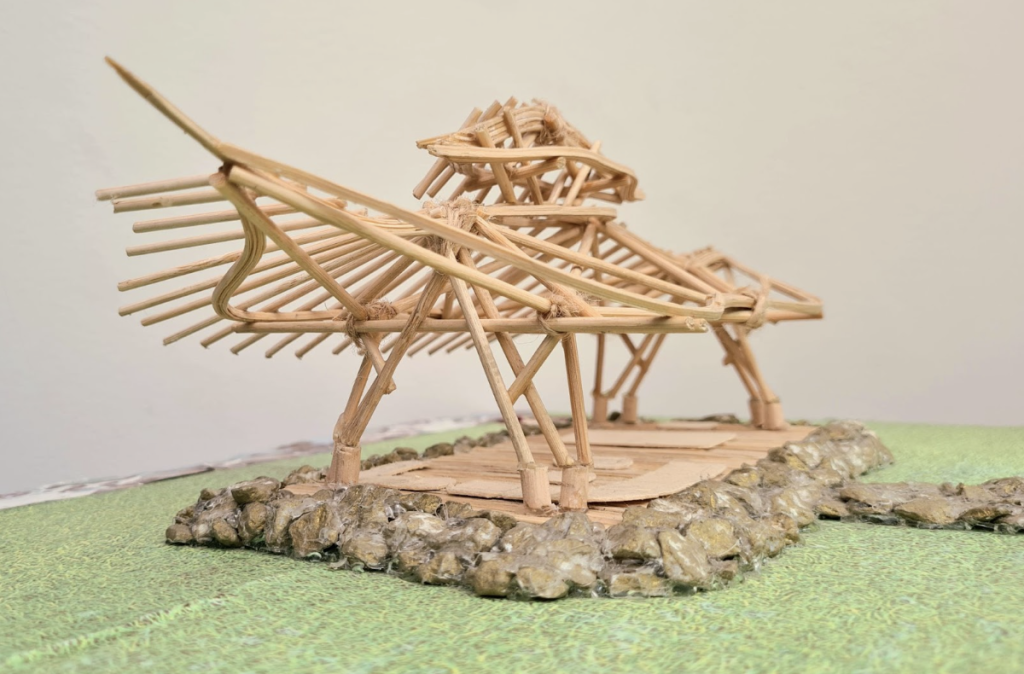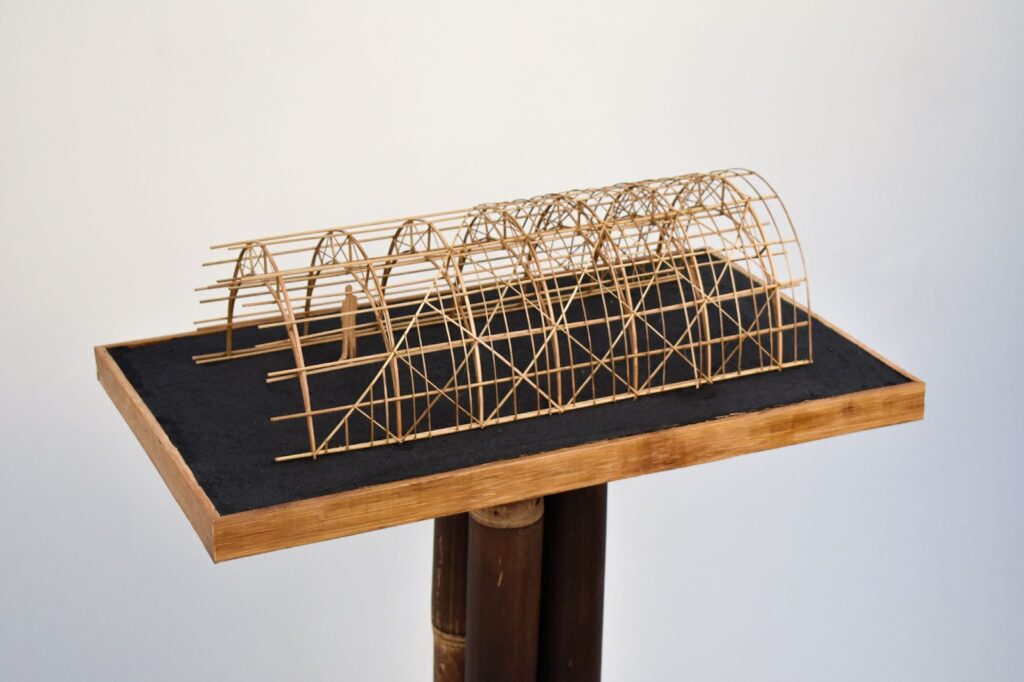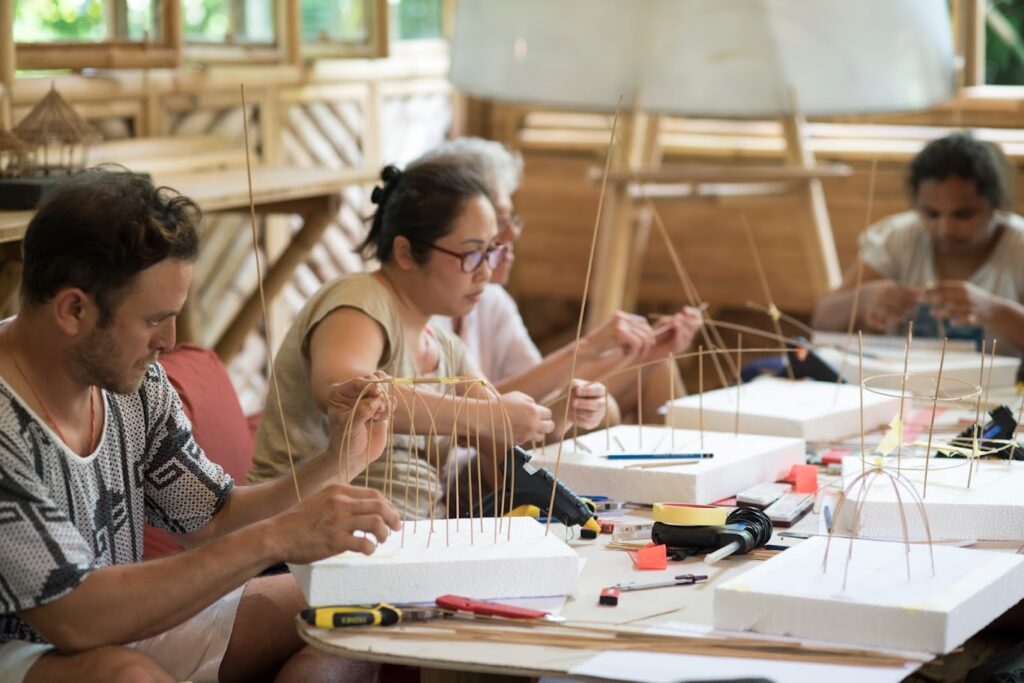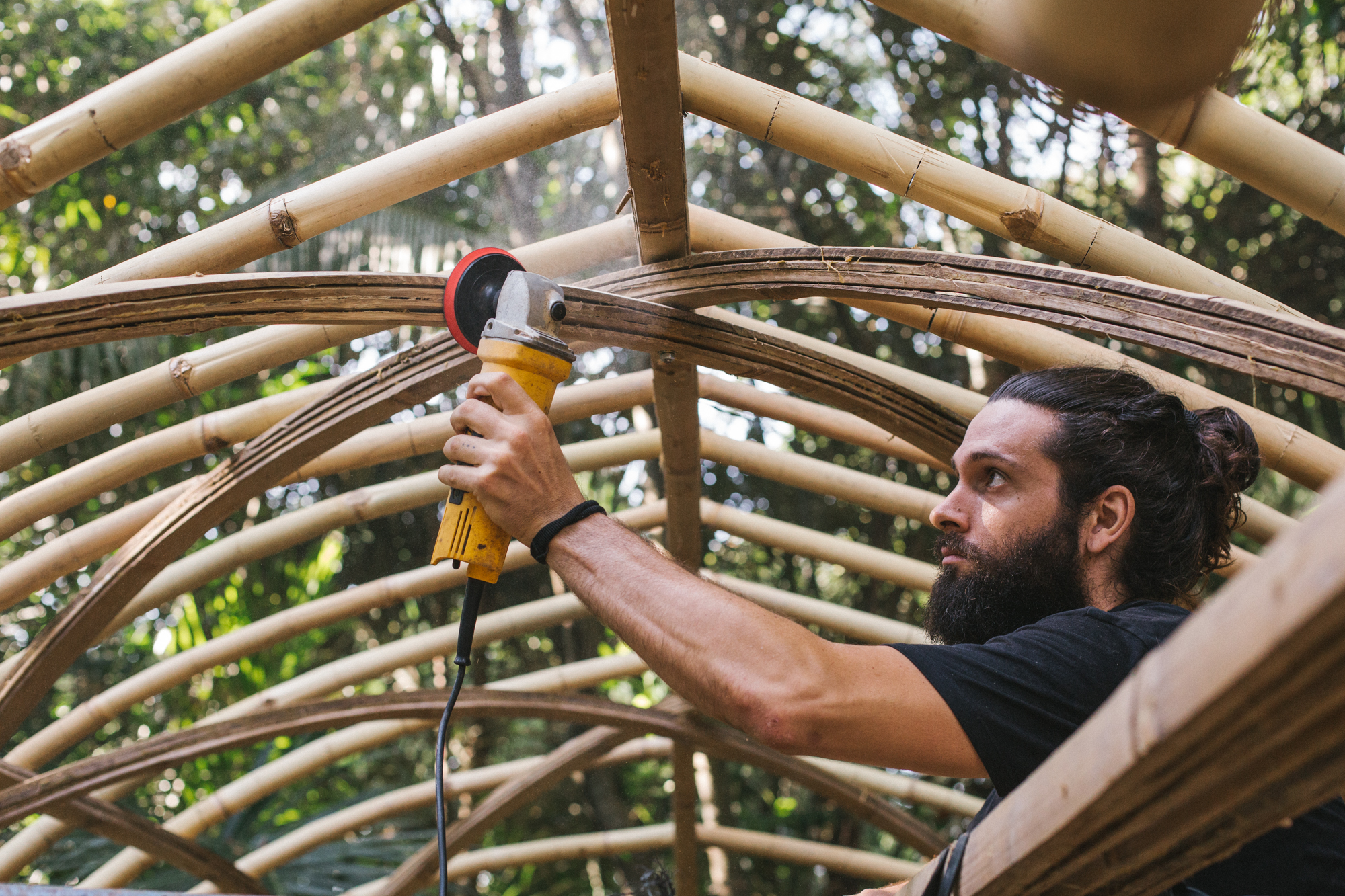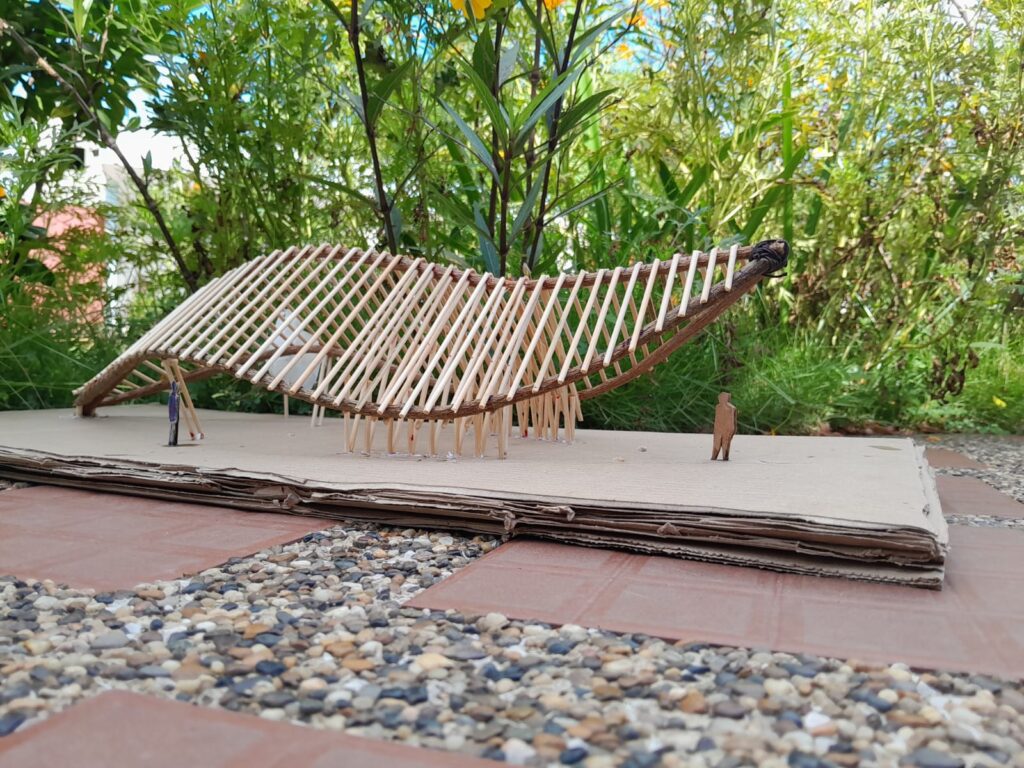Crafting a stunning serving tray from black bamboo
By Jennie Cunningham | September 13, 2022 | Student Work -
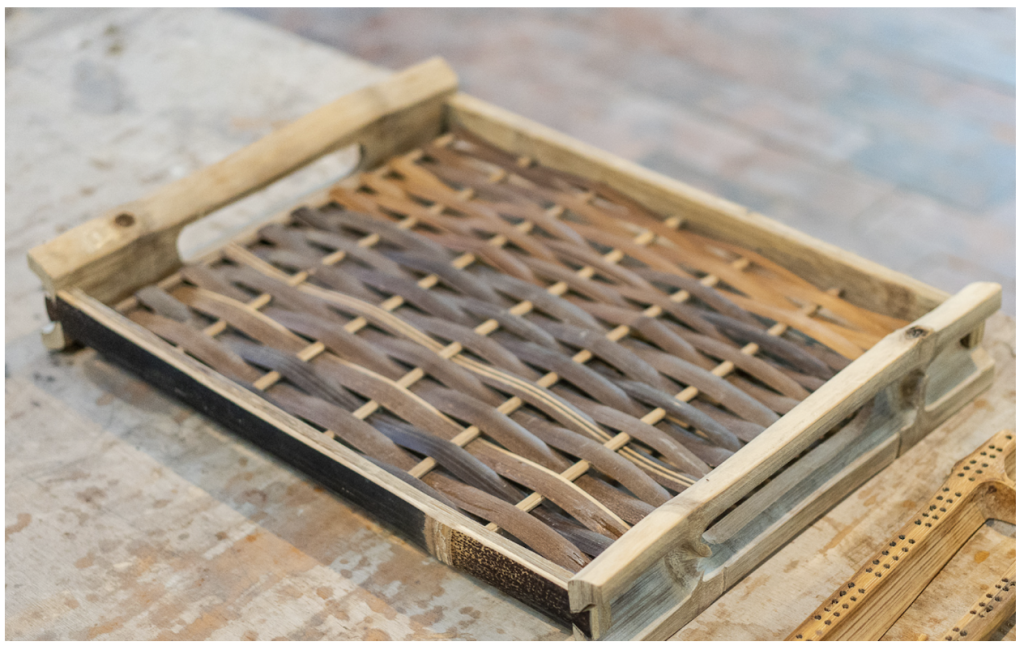
Follow the journey of crafting a bamboo serving tray from scratch in just three days during the Bamboo U Build and Design Course.
During the 11 Day Bamboo U Build and Design Course in Bali, we dedicate the second part of the course for students to either immerse in a full-scale bamboo structure or to work with master carpenters and a resident designer to fulfill a prototype for a small-scale bamboo object or furniture piece. In so doing, it is our aim that working hands-on with bamboo will give students a deeper understanding of bamboo as a building material.
In August 2022, Jennie Cuningham joined us from the U.S to take a break and immerse in bamboo education and building for two weeks. In the second part of the course, she worked on a design for a bamboo serving tray that would become her go-to tray to use for backyard BBQs in the summer at home.
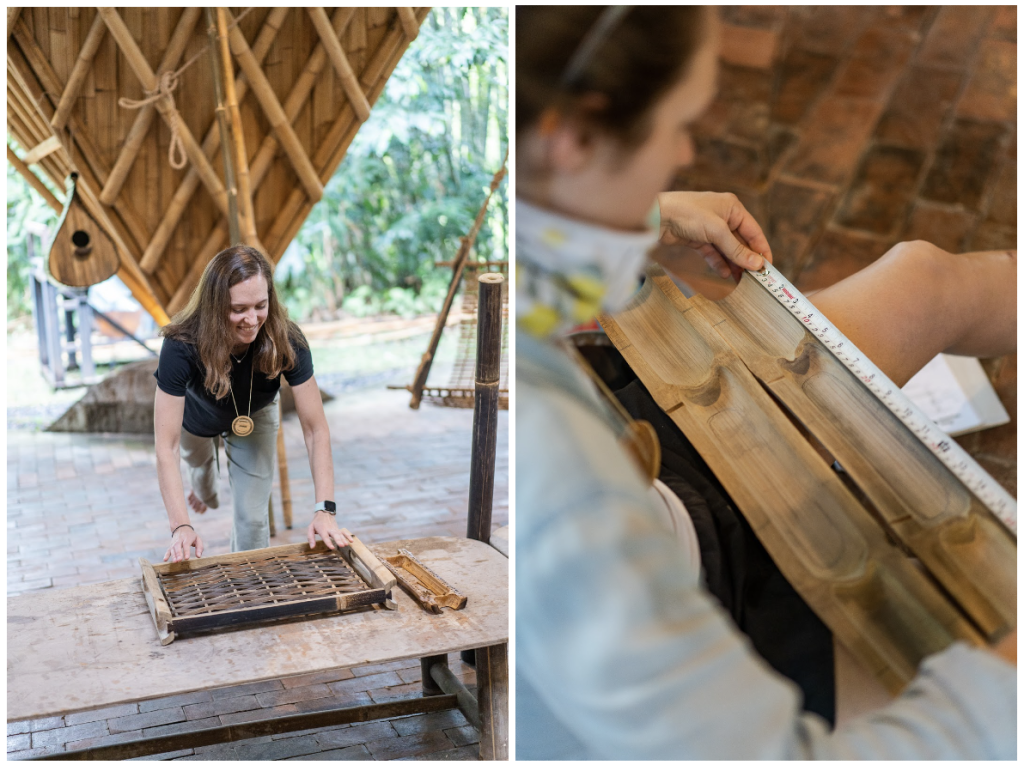
Design Idea, Concept and Inspiration
I wanted to create a product that demonstrated the natural strength and versatility of bamboo. One part of the resource that I wanted to make sure to incorporate in my design was bamboo bone, which is the vertical cross-section of a culm. Bamboo bone can create a natural handle and so the main inspiration for my tray was coming up with a household item that I was currently missing in my life that had handles. The serving tray is large enough to hold two dining plates diagonally but small enough to easily carry.
Throughout the first half of the course, we were exposed to many different techniques and uses for bamboo. I tried to incorporate as many of those into my final design as I could. Some things that we learned about were included in my preliminary design phase, but during the building process, they did not make it into the final product.
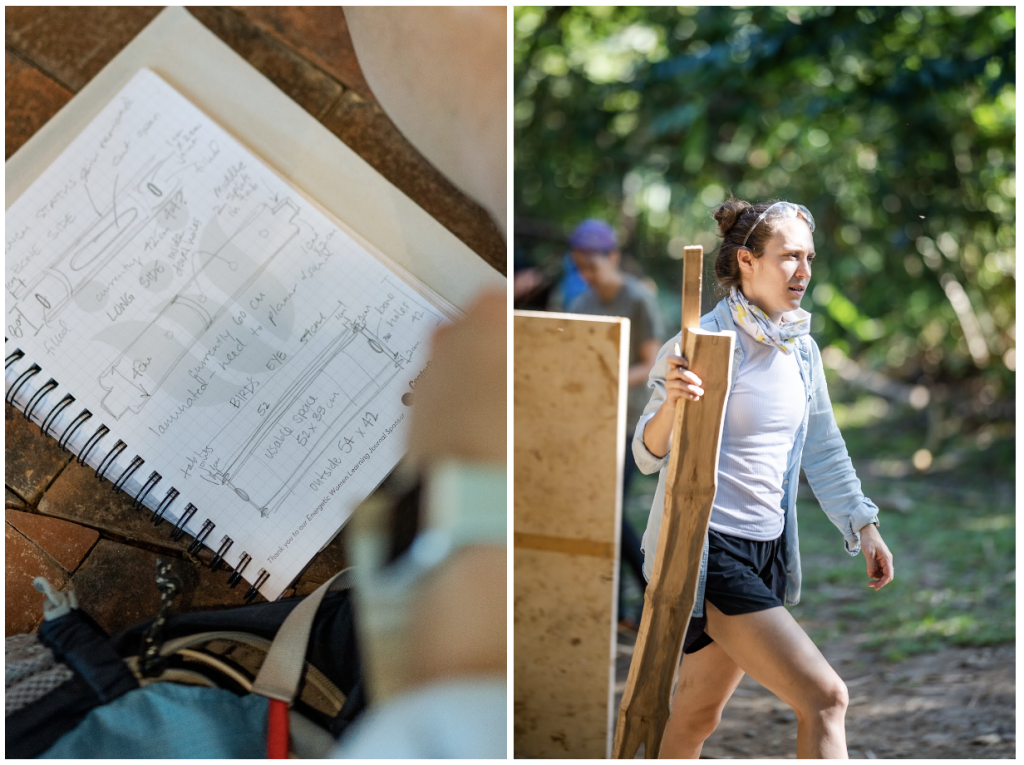
Crafting The Tray
I liked the idea of showing the variety of species and colors of bamboo within one product. The shorter sides of the tray are made from Bambusa blumeana (known locally as bambu duri / thorn bamboo) which was cut in vertical cross sections to utilize the bamboo bone. The silica was removed from the short sides for a more organic look. The longer sides are made using laminated splits from Dendrocalamus asper niger. I kept the silica on the outer split so the color would be present.
Seven dowels are secured as internal rods so they are not seen through the Dendrocalamus asper niger silica. The dowels are made from Gigantochloa apus bamboo sticks (known locally as bambu tali lidi). The inside of the tray is woven with splits from bamboo bono. The four corner joints are dovetail joints with the long sides locking into the bamboo bone.
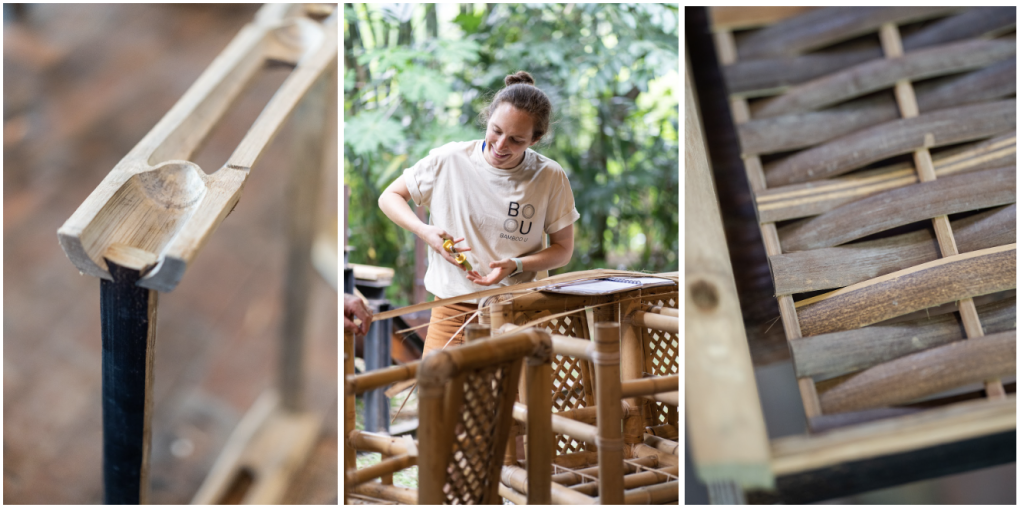
Challenges and Learnings
The main challenge was working within the constraints of the materials available and the way the materials responded to the function of the tray. I needed to be adaptable and open to changing my design as I went. I definitely thought the tray was going to be easier to make and the process would go much faster but I now have much more appreciation for the final product.
The corner joints and the inside of the tray changed the most as the product progressed. These were by far the most challenging elements to get right. I created many different iterations of each and sometimes moved forward with a potential fix before hitting a roadblock and completely changing direction.
I am excited that I have a product that I can take home and be proud of each time I use it. My biggest takeaway from the experience of crafting my own bamboo serving tray was that a design will change many times during the process but in the end, you land on the design that was meant to be all along.
The Future
Since I have returned back from Bali, I reached out to my professor from Dartmouth College who originally taught me about IBUKU roughly 7 years ago, and told him of my experience at Bamboo U. He is going to make the final project for his course this upcoming winter be “Green Product Design with Bamboo” and I will serve as the class consultant for the students’ projects. I am excited that I will have an opportunity to share all the knowledge I learned at Bamboo U.
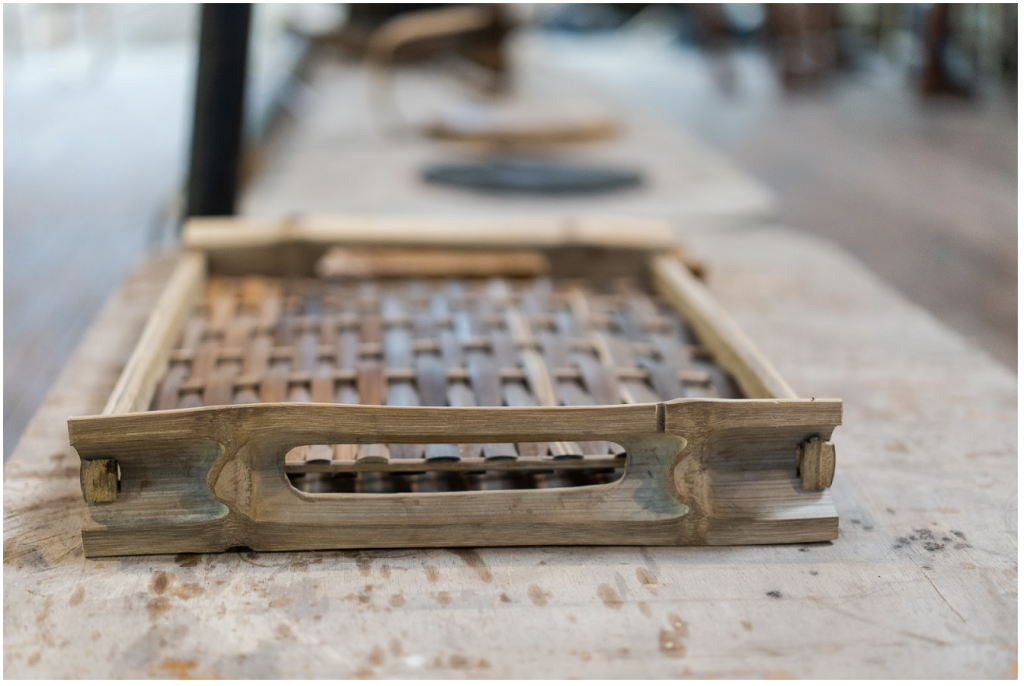

Jennie Cunningham is an environmental engineer who lives in Boston, Massachusetts. Although she had not worked directly with bamboo before, she is thrilled to see what the future holds now that she has attended Bamboo U.
OCTOBER 10-21, 2025
The 11 Day Bamboo Build & Design Course in Bali
In 11 days, we'll show you how to build bamboo structures we’ll share all that it takes to build with nature.
Start Anytime
The Bamboo Harvesting Course
The Bamboo Harvesting Course is an online step-by-step training to harvest and care for your bamboo clumps to ensure their longevity and productivity. This maximizes the potential of this beautiful grass as a rapidly renewable resource.Whether you are an architect, builder, or sustainability enthusiast, this mini course will enable you to utilize this rapidly regenerative resource as a durable construction material.It will help remove any fear or doubt about the durability of bamboo and help you build reputable bamboo structures that stand the test of time!

